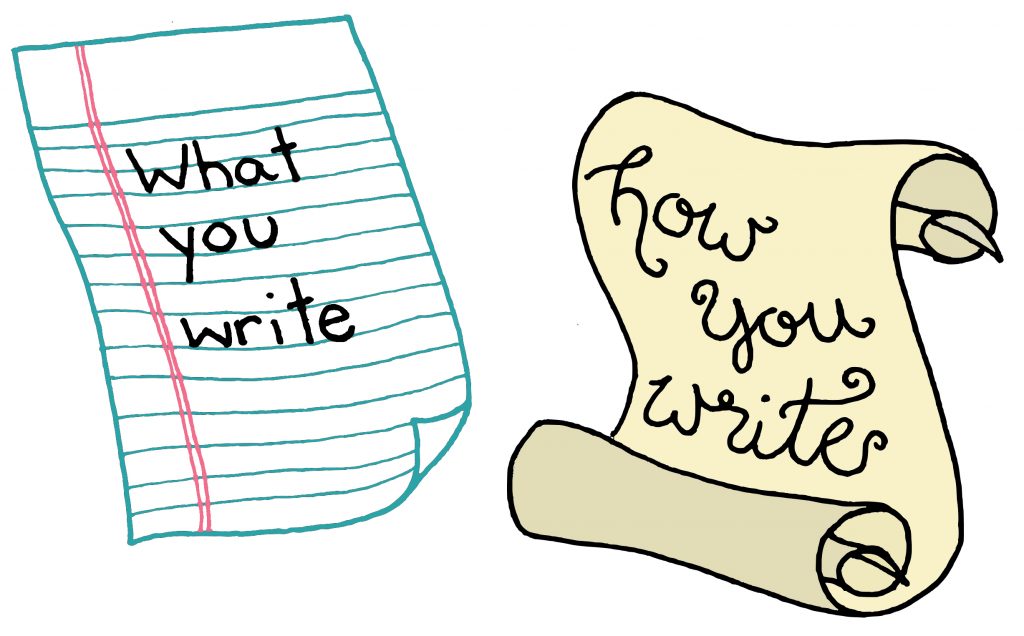1.3: Introduction to Scholarly Writing
- Page ID
- 16482
When you first enter university, you may be unfamiliar with scholarly writing. This genre of writing is associated with post-secondary education and many academic fields including nursing. When learning to write in a scholarly way, it is important to consider both the content of your writing (what you write) and the presentation of your ideas (how you write).

Figure 1.3: Scholarly writing
Fundamentals of Scholarly Writing include:
- Presentation of ideas in clear, succinct, accurate, and congruent ways.
- Incorporation of your original thought and a critical lens.
- Credible evidence to support your thoughts.
- Attention to structure, paragraph construction, grammar, language, tone, voice, audience, etc.—all of these are addressed in future chapters.
Scholarly writing is completely different from conversations or other types of writing. When you speak, send a text, or write in a diary, you use informal language. For example, a phone text typically lacks attention to structure and grammar, is short and conversational in tone, and may include acronyms, symbols, and emojis. These non-scholarly formats often use colloquial phrasing—familiar, everyday, slang terms. More to come on that in Chapter 5.
Some of you are enrolled or may choose to enroll in a writing course; if so, this book will complement your learning. The fundamentals of scholarly writing are expanded on in each chapter of this book.


